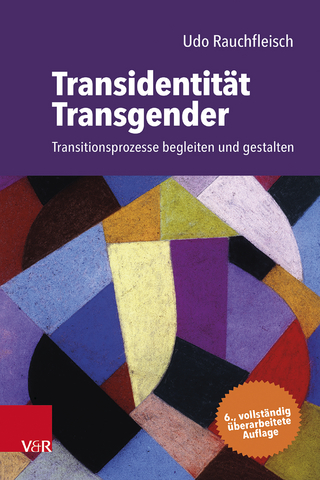
Understanding Asexuality
Seiten
2012
Rowman & Littlefield (Verlag)
978-1-4422-0099-9 (ISBN)
Rowman & Littlefield (Verlag)
978-1-4422-0099-9 (ISBN)
In a world where people often feel compelled to advertise their sexual inclinations and preferences, many people identify as asexual, lacking sexual attraction to either men or women. This book introduces the idea of asexuality as a fourth category of sexual orientation and reveals the historical, biological, and social aspects of asexuality.
Asexuality can be defined as an enduring lack of sexual attraction. Thus, asexual individuals do not find (and perhaps never have) others sexually appealing. Some consider “asexuality” as a fourth category of sexual orientation, distinct from heterosexuality, homosexuality, or bisexuality. However, there is also recent evidence that the label “asexual” may be used in a broader way than merely as “a lack of sexual attraction.” People who say they have sexual attraction to others, but indicate little or no desire for sexual activity are also self-identifying as asexual. Distinct from celibacy, which refers to sexual abstinence by choice where sexual attraction and desire may still be present, asexuality is experienced by those having a lack or sexual attraction or a lack of sexual desire.
More and more, those who identify as asexual are “coming out,” joining up, and forging a common identity. The time is right for a better understanding of this sexual orientation, written by an expert in the field who has conducted studies on asexuality and who has provided important contributions to understanding asexuality. This timely resource will be one of the first books written on the topic for general readers, and the first to look at the historical, biological, and social aspects of asexuality. It includes firsthand accounts throughout from people who identify as asexual. The study of asexuality, as it contrasts so clearly with sexuality, also holds up a lens and reveals clues to the mystery of sexuality.
Asexuality can be defined as an enduring lack of sexual attraction. Thus, asexual individuals do not find (and perhaps never have) others sexually appealing. Some consider “asexuality” as a fourth category of sexual orientation, distinct from heterosexuality, homosexuality, or bisexuality. However, there is also recent evidence that the label “asexual” may be used in a broader way than merely as “a lack of sexual attraction.” People who say they have sexual attraction to others, but indicate little or no desire for sexual activity are also self-identifying as asexual. Distinct from celibacy, which refers to sexual abstinence by choice where sexual attraction and desire may still be present, asexuality is experienced by those having a lack or sexual attraction or a lack of sexual desire.
More and more, those who identify as asexual are “coming out,” joining up, and forging a common identity. The time is right for a better understanding of this sexual orientation, written by an expert in the field who has conducted studies on asexuality and who has provided important contributions to understanding asexuality. This timely resource will be one of the first books written on the topic for general readers, and the first to look at the historical, biological, and social aspects of asexuality. It includes firsthand accounts throughout from people who identify as asexual. The study of asexuality, as it contrasts so clearly with sexuality, also holds up a lens and reveals clues to the mystery of sexuality.
Anthony Bogaert is professor of community health sciences and psychology at Brock University. He has published numerous peer-reviewed journal articles, along with book chapters, on such topics as asexuality, sexual desire, sexual orientation, birth order and sexual identity, and other related topics.
1: Introduction
2: The A, B, C, and Ds of Sex (and Asex)
3: History of Asexuality
4: The Prevalence of Asexuality
5: To Masturbate or Not to Masturbate
6: Sex and Gender
7: Forging an (A)sexual Identity
8: The Madness of Sex
9: Do You Have Hypoactive Skydiving Disorder?
10: A Monster in All Our Lives
11: Art and Food on Planet Sex
12: (A)sexuality and Humor
13: Just Because
14: The Beginning
Bibliography
| Erscheint lt. Verlag | 9.10.2012 |
|---|---|
| Verlagsort | Lanham, MD |
| Sprache | englisch |
| Maße | 159 x 232 mm |
| Gewicht | 426 g |
| Themenwelt | Geisteswissenschaften ► Psychologie ► Sexualität / Partnerschaft |
| Sozialwissenschaften ► Soziologie ► Gender Studies | |
| ISBN-10 | 1-4422-0099-5 / 1442200995 |
| ISBN-13 | 978-1-4422-0099-9 / 9781442200999 |
| Zustand | Neuware |
| Haben Sie eine Frage zum Produkt? |
Mehr entdecken
aus dem Bereich
aus dem Bereich
Transitionsprozesse begleiten und gestalten
Buch | Softcover (2024)
Vandenhoeck & Ruprecht (Verlag)
CHF 48,95
Wege aus dem Chemsex-Konsum bei MSM
Buch | Softcover (2022)
Psychiatrie Verlag
CHF 34,95
die wichtigsten Konzepte, Tools und Interventionen
Buch | Softcover (2023)
Vandenhoeck & Ruprecht (Verlag)
CHF 34,95


